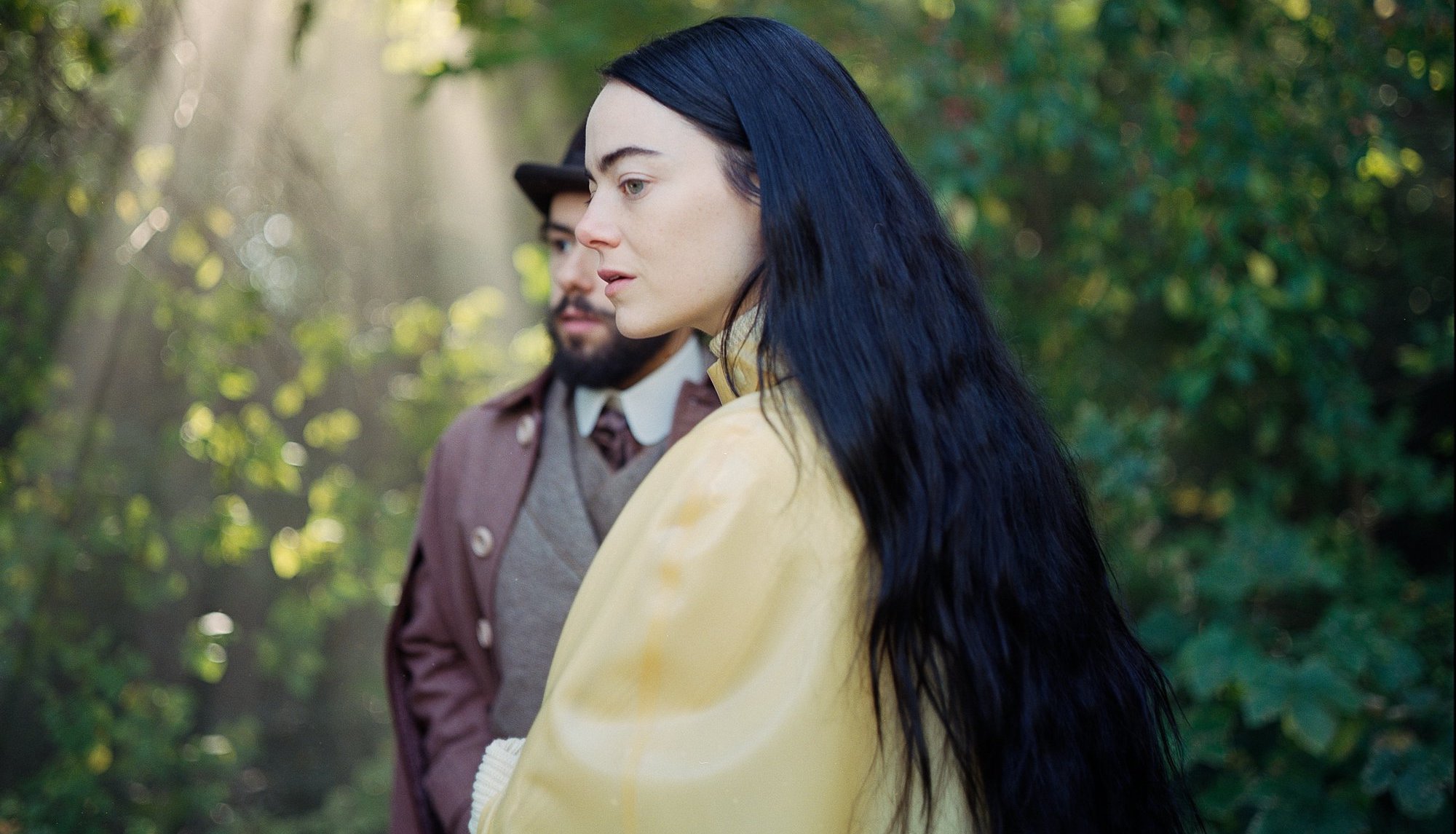
Tony McNamara does not spend much time on the sets of Yorgos Lanthimos productions. This is not because there is no joy to be had. Who wouldn’t be amused by the sight of Emma Stone and Mark Ruffalo crawling around soundstages and snarling like beasts or being forced to speak all their lines backward and in double time? Those are but a few of the acting games Lanthimos encouraged his cast to indulge during the beginning of rehearsal, and which were a delight for a scribe to witness. However, when it comes to working with an auteur as singular as Lanthimos, McNamara knows his job is mostly done when the cameras roll.
“By now, I realize his attitude is we’ve worked for five or six years on the script, and we’re making it because he thinks it’s right,” McNamara says. “We do tiny adjustments during rehearsal… but eventually, I’m just drinking coffee.” Still, even an Oscar-nominated screenwriter and playwright whose credits include The Favourite and Hulu’s The Great can attest drinking caffeine on the set of Poor Things is something else. He doesn’t even refer to the heightened steampunk wonderland aesthetic, which has been giddily stitched together with the horror Gothic, as a film set. In McNamara’s mind, it’s a real place—or at least as real as any of Lanthimos’ most fevered dreams.
“I wandered around and went to Lisbon by myself for a day,” McNamara reminisces. “It’s amazing, [production designers James Price and Shona Heath] did an incredible job. Yorgos would tell me about it, but to be on set and to see it was like being in another world.” And in that world, the advancements of the 19th century far outpace even Mary Shelley’s infamous nightmare. For here, the maddest of mad scientists (Willem Dafoe under a thick coat of makeup and even thicker Scottish brogue) drives around in an automated carriage where the head of a sentient horse has been sewn on at the front. If one thinks this strange, wait until you see who is riding in the back.
Boldly adapted from Alasdair Gray’s 1992 novel of the same name, Poor Things is a perverse and willfully transgressive riff on the Frankenstein archetype wherein the greatest creation out of Dr. Godwin Baxter’s laboratory is a woman made from spare parts he found lying around. Genuinely, Dafoe’s character recovers the corpse of a recent suicide and not only reanimates the body but puts the brain of her unborn fetus into her skull, thereby creating a whole new adult woman with the mind of an infant. He calls her Bella (Stone).
Lest this film sound entirely ghoulish, McNamara insists he and Lanthimos always saw the film as a comedy. A dark and macabre one? Of course, these are the filmmakers who brought us The Favourite, after all (Lanthimos’ other credits also include The Lobster and The Killing of a Sacred Deer). But it is still deeply funny when Stone combines her immense comedic physicality with a preternatural gift for interiority. She rebuilds this Victorian New Woman so she can eventually do what neither the “monster’s mate” in Shelley’s original Frankenstein novel or the eponymous character in James Whale’s classic Bride of Frankenstein were ever allowed: she leaves the lab and the men who made her behind.
“It felt like we could break free of the genre,” McNamara says, “break her free of that story and, in a way, tell a bigger story.”
When we catch up with McNamara over Zoom, it’s weeks after the film’s rapturous reception at various fall festivals and close to a decade since the project was first broached by Lanthimos. These days, Lanthimos and McNamara are intimately close, building a deeper friendship as neighbors in London where they worked on The Favourite. McNamara even confirms they’re collaborating on a third and currently unnamed project. The idea for Poor Things, though, went back many years, beginning before the Greek filmmaker made his first English-language film. During McNamara and Lanthimos’ earliest meeting, the latter only had a copy of Gray’s novel and a dream that varied quite a bit from the source material.
“It was a really good screenwriting challenge because [Bella] didn’t have a perspective in the book,” McNamara explains. “It was told from the guy’s point-of-view in epistolary [fashion]. Letters and stuff.” There were postcards and little hints at what the reanimated corpse of Bella Baxter was getting up to after she left Scotland to see the world with a libertine bon vivant (Ruffalo’s character in the film), but instead of making the movie from the vantage of the patriarchy, McNamara saw the opportunity to make up plenty of lurid details on his own by following Bella’s escape from it.
That getaway was part of the immediate appeal to Stone, who began circling the project as production on The Favourite wound down and Lanthimos gave her McNamara’s first draft. The finished film marks the third collaboration between screenwriter and star, with McNamara also penning the final drafts of Cruella for Stone. Each reunion with the leading lady has likewise given McNamara more clarity on how to write for a performer who excels at the scribe’s penchant for acidic one-liners and putdowns.
“I feel incredibly blessed but also incredibly confident that whatever I write, she’ll make sound amazing,” says McNamara. “I know her well enough now that I sort of instinctively know what will suit her without thinking about it too much. It’s a completely safe environment to take big risks with characters when you know she’s going to be doing it.”
Bella is perhaps the biggest risk Stone has ever taken, too, given how the character evolves from petulant infancy to free-thinking adulthood, but not without plenty of pratfalls and some rather frank sex scenes along the way. She is thus the ideal heroine for McNamara, whose dialogue is famous for its brutal juxtaposition of loquacious fluidity and sudden f-bombs.
Says McNamara, “As a writer, I love language, and I think that’s why I like working on Yorgos’ films, because there’s always a certain elevated idea behind it that allows me to write great language that can stretch the gamut from poetic to scatological… [but] you don’t usually get a character where you can change how they talk, and you can develop it as she develops intellectually. So it was a great vehicle to talk about base desires with her discovery of cruelty, her discovery of sexuality, her discovery of intellect and morality.”
Poor Things is, in fact, happily candid about the salacious side of the human condition, as well as our silliness. Even the title is a suggestion that all people are a tad ridiculous and pathetic, and what better way to explore that than having Bella travel everywhere, from a Lisbon cafe to a Parisian brothel? Still, in the modern climate of ever-shifting social mores, it feels a wee bit mad unto itself to make such a film on this spectacular a scale. Yet therein lies the appeal.
“I think we knew it was the kind of movie that not everyone was going to like,” McNamara says. “It’s bold and it’s out there, and it’s a weird idea at its heart. I even remember Yorgos saying after The Favourite, ‘we need to make this now, because when else are they going to let me make it?’” One imagines Bella Baxter, or for that matter Mary Shelley, would approve.
Poor Things opens in theaters on Dec. 8.
The post The Making of Poor Things: ‘A Great Vehicle to Talk About Base Desires and Sexuality’ appeared first on Den of Geek.






